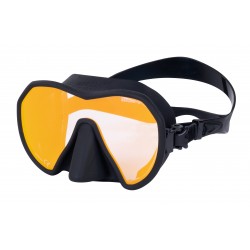How does a diving wetsuit work ?
What is the role of diving wetsuits?
The diving wetsuit is used to protect the diver against the cold. When diving, being cold is not only uncomfortable, it is also a danger for the diver.
In the water, cooling is faster than in the air. Indeed, water has a greater heat transfer coefficient than air. The colder the water, the faster the heat loss.
The role of wetsuits is therefore twofold. It will trap the water which will heat up on contact with the diver's skin, and the suit combined with the thin amount of water will form a protective layer.
There are three types of diving suits: wetsuits, semi-dry suits and dry suits. In the case of wetsuits, water flows in and circulates. In a semi-dry suit, water enters slightly and is renewed a little, and finally in the case of a dry suit, water does not enter at all.
Neoprene sleeves, which can be placed at the ankles, wrists and on the face or neck, increase thermal comfort by reducing water circulation.
Reinforcements on the elbows and knees reduce the usury of the diving wetsuit.
Another role of wetsuits is to protect the diver against possible burns, cuts and frictions from stinging animals, rocks, sand, etc. This protection is essential, especially in certain warm waters!
Which materials is a diving wetsuit made of?
Diving wetsuits are basically made from neoprene which is a synthetic rubber honeycombed with gas bubbles. They are also made of fabric, which has a role of reinforcement, to solidify the neoprene foam.
Neoprene is used to isolate the diver from the cold, while allowing him to keep a great flexibility and to remain lightweight.
At the time of its manufacture, the neoprene is molded into a mattress, which is then split into slices. The raw material therefore has a fairly grippy appearance, but it is perfectly smooth at the ends of the mattress.
How to choose your wetsuit thickness?
There are many thicknesses of diving wetsuits, it's up to you to choose the one that suits you best according to your needs!
Wetsuits less than 3mm thick are made for dives in very hot water, above 25 degrees. They can also be used as underwear.
3mm neoprene wetsuits offer good thermal protection, while allowing you to maintain great ease of movement. It can particularly be used for diving in warm waters, between 22 and 30 degrees.
For temperate waters, between 16 and 24 degrees, 5mm neoprene wetsuits are an excellent choice.
Finally, 7mm diving suits are made for dives in cold water, between 10 and 18 degrees, and offer great thermal protection to the diver. On the other hand, the freedom of movement with this type of wetsuit is less than with finer wetsuits.
When choosing the thickness of your diving wetsuit, some other factors than the water temperature should also be taken into account. Consider the time spent in the water, as well as the depth of the dive. The longer the dive, or the greater its depth, the thicker the wetsuit must be because it will crash more.
Perception of cold is also different from person to person! If you are sensitive to cold,
choose a wetsuit slightly thicker than those recommendedpreviously.



 Snorkeling
Snorkeling
 Beuchat Team
Beuchat Team
 Scuba diving
Scuba diving
 Free Diving
Free Diving
 Snorkeling
Snorkeling
 Beuchat Team Spearfishing
Beuchat Team Spearfishing







